Best Haskell Pattern Matching Books to Buy in January 2026
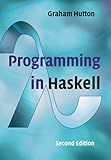
Programming in Haskell



Effective Haskell: Solving Real-World Problems with Strongly Typed Functional Programming


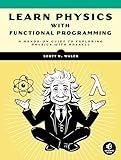
Learn Physics with Functional Programming: A Hands-on Guide to Exploring Physics with Haskell


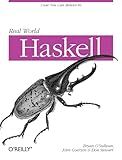
Real World Haskell
- HIGH-QUALITY, WELL-PRESERVED USED BOOKS AT GREAT PRICES!
- ECO-FRIENDLY CHOICE: SAVE TREES BY BUYING PRE-LOVED BOOKS!
- UNIQUE FINDS: DISCOVER RARE TITLES NOT AVAILABLE IN STORES!



Learn You a Haskell for Great Good!: A Beginner's Guide
- AFFORDABLE PRICES ON QUALITY USED BOOKS FOR BUDGET-CONSCIOUS READERS.
- ECO-FRIENDLY CHOICE: PROMOTE RECYCLING WHILE ENJOYING GREAT READS.
- EACH BOOK INSPECTED FOR GOOD CONDITION, ENSURING CUSTOMER SATISFACTION.


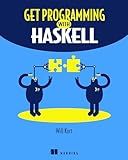
Get Programming with Haskell


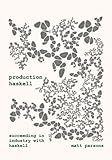
Production Haskell: Succeeding in Industry with Haskell



Parallel and Concurrent Programming in Haskell: Techniques for Multicore and Multithreaded Programming


Pattern matching is a powerful feature in Haskell that allows you to deconstruct data structures and extract values. It is used to define functions that behave differently based on the shape or contents of the input.
Here is a general syntax for pattern matching in Haskell:
functionName :: DataType -> ReturnType functionName pattern1 = result1 functionName pattern2 = result2 ... functionName patternN = resultN
In the above code, functionName is the name of the function you're defining, DataType is the type of the input, and ReturnType is the type of the returned value. Each pattern corresponds to a different case, and the associated result is what will be returned when the input matches that particular pattern.
Pattern matching can be used with various datatypes, including lists, tuples, algebraic data types, and more. Here are some common pattern matching examples:
- Matching a single value:
isZero :: Int -> Bool isZero 0 = True isZero _ = False
In this example, if the input is 0, the pattern matches and True is returned. If the input is anything else, the _ acts as a catch-all pattern and False is returned.
- Matching a list:
isListEmpty :: [a] -> Bool isListEmpty [] = True isListEmpty _ = False
The first pattern matches an empty list [], and returns True. The second pattern, denoted by _, matches any non-empty list and returns False.
- Matching a tuple:
getFirstElement :: (a, b) -> a getFirstElement (x, _) = x
Here, the first pattern matches any tuple (x, _) and returns the first element x. The _ is used to ignore the second element.
Pattern matching can also be nested, allowing you to match patterns within patterns. Additionally, you can use guards (conditionals) in combination with pattern matching for more complex logic.
Pattern matching is a fundamental concept in Haskell and is widely used to write concise and expressive code. It enables you to handle different cases of data effectively, making your functions more robust and versatile.
How to use pattern matching to handle different cases in algebraic data types in Haskell?
Pattern matching is a powerful mechanism in Haskell that allows you to handle different cases of algebraic data types. Here are the steps to use pattern matching effectively:
- Define your algebraic data type: Start by defining an algebraic data type using the data keyword. For example, consider a simple data type called Shape:
data Shape = Circle Double | Rectangle Double Double
This data type has two constructors: Circle and Rectangle, each taking different arguments.
- Write a function that operates on your data type: Create a function that pattern matches on different cases of your data type. For example, let's define an area function for our Shape type:
area :: Shape -> Double area (Circle r) = pi * r * r area (Rectangle b h) = b * h
In this case, the area function pattern matches on two cases: Circle r and Rectangle b h. It calculates the area accordingly based on the shape.
- Handle all possible cases: It's important to provide a pattern match for all possible cases of your data type. If you miss a case, Haskell will give you a compile-time warning, forcing you to handle all cases explicitly.
For example, if we add another constructor to our Shape data type called Triangle, the area function must be modified to handle this case as well:
data Shape = Circle Double | Rectangle Double Double | Triangle Double Double
area :: Shape -> Double area (Circle r) = pi * r * r area (Rectangle b h) = b * h area (Triangle b h) = 0.5 * b * h
Here, we added a pattern match for Triangle which calculates its area.
By following these steps, you can effectively use pattern matching to handle different cases in algebraic data types in Haskell.
What are wildcards in pattern matching in Haskell and how to use them?
Wildcards in pattern matching in Haskell are placeholders that match any value. They are denoted by an underscore _ and can be used when you don't care about the value of a particular part of a pattern.
Here are a few examples of how wildcards can be used:
- Ignore a value: If you don't care about a particular value, you can use a wildcard to ignore it. For example, in the pattern matching below, the _ wildcard is used to ignore the second element of the list:
headAndTail :: [a] -> (a, [a]) headAndTail (x:_) = (x, _)
- Match against any value: Wildcards can also be used to match any value. For example, in the pattern matching below, the _ wildcard is used to match against any integer value:
isZero :: Int -> Bool isZero 0 = True isZero _ = False
- Extract some values and ignore others: Wildcards can be combined with specific patterns to extract certain values while ignoring others. For example, in the pattern matching below, the _ wildcard is used to ignore the second element of a tuple while extracting the first element:
fstElement :: (a, b) -> a fstElement (x, _) = x
It's important to note that wildcards cannot be used multiple times in the same pattern, as it would be ambiguous and can lead to runtime errors. Wildcards can only be used to match a single value or to ignore a single value in a pattern.
What is pattern matching in list comprehensions in Haskell?
Pattern matching in list comprehensions in Haskell refers to the ability to destructure elements of a list or a tuple while iterating over it using list comprehensions. It allows you to bind variables to specific parts of the elements in the list or tuple and use those variables to manipulate or filter the elements in the list comprehension.
For example, consider the following list comprehension:
[(x, y) | (x, y) <- [(1, 2), (3, 4), (5, 6)], x + y >= 5]
In this example, the pattern (x, y) is used to destructure each pair (x, y) in the list [(1, 2), (3, 4), (5, 6)]. The pattern matching binds variables x and y to the corresponding parts of the pairs. The condition x + y >= 5 filters out pairs whose sum is less than 5. The resulting list comprehension will yield [(3, 4), (5, 6)], as they are the pairs that satisfy the condition.
Pattern matching in list comprehensions allows for powerful manipulation and filtering of lists by matching and extracting specific elements based on their structure. It is a concise and expressive feature in Haskell that leverages the functional programming paradigm.
